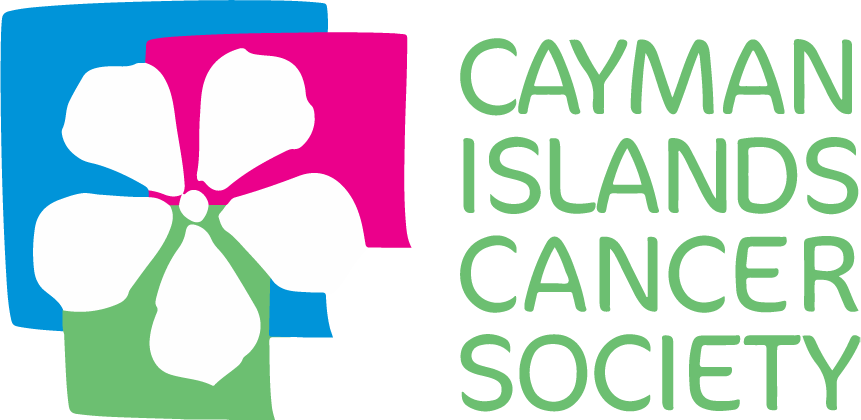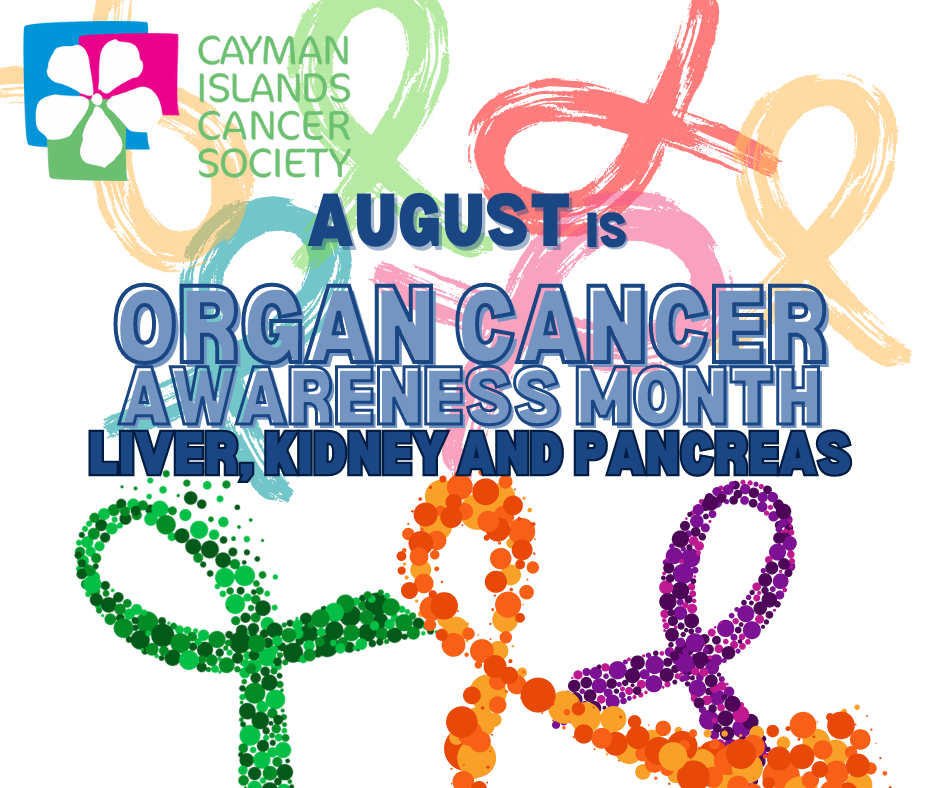Below you’ll find the risks and symptoms for each cancer in this month’s awareness campaign.
Recognise the habits and symptoms in your own life, and consult a doctor if you feel any of the below apply to you.
Pancreatic Cancer
The pancreas has two main jobs in the body:
- To make juices that help digest (break down) food.
- To make hormones, such as insulin and glucagon, that help control blood sugar levels. Both of these hormones help the body use and store the energy it gets from food.
The digestive juices are made by exocrine pancreas cells and the hormones are made by endocrine pancreas cells. About 95% of pancreatic cancers begin in exocrine cells.
This summary is about exocrine pancreatic cancer.
Risk factors for pancreatic cancer include the following:
- Smoking.
- Being very overweight.
- Having a personal history of diabetes or chronic pancreatitis.
- Having a family history of pancreatic cancer or pancreatitis.
- Having certain hereditary conditions, such as:
- Multiple endocrine neoplasia type 1 (MEN1) syndrome.
- Hereditary nonpolyposis colon cancer (HNPCC; Lynch syndrome).
- von Hippel-Lindau syndrome.
- Peutz-Jeghers syndrome.
- Hereditary breast and ovarian cancer syndrome.
- Familial atypical multiple mole melanoma (FAMMM) syndrome.
- Ataxia-telangiectasia.
Signs and symptoms of pancreatic cancer include jaundice, pain, and weight loss.
Pancreatic cancer may not cause early signs or symptoms. Signs and symptoms may be caused by pancreatic cancer or by other conditions. Check with your doctor if you have any of the following:
- Jaundice (yellowing of the skin and whites of the eyes).
- Light-colored stools.
- Dark urine.
- Pain in the upper or middle abdomen and back.
- Weight loss for no known reason.
- Loss of appetite.
- Feeling very tired.
Liver Cancer
The main functions of the liver include the following:
- to make bile to help digest fat that comes from food
- to store glycogen (sugar), which the body uses for energy
- to filter harmful substances from the blood so they can be passed from the body in stools and urine
The liver is one of the largest organs in the body. It has two lobes and fills the upper right side of the abdomen inside the rib cage.
Liver cancer causes and risk factors
The most common type of liver cancer in adults, hepatocellular carcinoma (HCC), typically develops in people with chronic (long-lasting) liver disease caused by hepatitis virus infection or cirrhosis. Men are more likely to develop HCC than women. People with multiple risk factors have an even higher risk.
Many risk factors have been associated with liver cancer. Not everyone with one or more of these risk factors will develop the disease, and the disease will develop in some people who don’t have any known risk factors. Risk factors include the following:
- Hepatitis B virus (HBV) infection: HBV can be transmitted in blood, semen, or other body fluids. The infection can be passed from mother to child during childbirth, through sexual contact, or by sharing needles that are used to inject drugs. It can cause inflammation (swelling) of the liver that leads to cancer. Routine HBV vaccination in infancy is reducing the incidence of HBV infection. Chronic HBV infection is the leading cause of liver cancer in Asia and Africa.
- Hepatitis C virus (HCV) infection: HCV can be transmitted in the blood. The infection can be spread by sharing needles that are used to inject drugs or, less often, through sexual contact. In the past, it was also spread during blood transfusions or organ transplants. Today, blood banks test all donated blood for HCV, which greatly lowers the risk of getting the virus from blood transfusions. It can cause cirrhosis that may lead to liver cancer. Chronic HCV infection is the leading cause of liver cancer in North America, Europe, and Japan.
- Cirrhosis: The risk of developing liver cancer is increased for people who have cirrhosis, a disease in which healthy liver tissue is replaced by scar tissue. The scar tissue blocks the flow of blood through the liver and keeps it from working as it should. Chronic alcoholism and chronic hepatitis infections are common causes of cirrhosis. People with HCV-related cirrhosis have a higher risk of developing liver cancer than people with cirrhosis related to HBV or alcohol use.
- Heavy alcohol use: Heavy alcohol use can cause cirrhosis, which is a risk factor for liver cancer. Liver cancer can also occur in heavy alcohol users who do not have cirrhosis. Heavy alcohol users who have cirrhosis are ten times more likely to develop liver cancer, compared with heavy alcohol users who do not have cirrhosis.
Studies have shown there is also an increased risk of liver cancer in people with HBV or HCV infection who use alcohol heavily.
- Aflatoxin B1: The risk of developing liver cancer may be increased by eating foods that contain aflatoxin B1 (poison from a fungus that can grow on foods, such as corn and nuts, that have been stored in hot, humid places). It is most common in sub-Saharan Africa, Southeast Asia, and China.
- Nonalcoholic steatohepatitis (NASH): NASH is a condition that can cause cirrhosis that may lead to liver cancer. It is the most severe form of nonalcoholic fatty liver disease, where there is an abnormal amount of fat in the liver. In some people, this can cause inflammation and injury to the cells of the liver.
Having NASH-related cirrhosis increases the risk of developing liver cancer. Liver cancer has also been found in people with NASH who do not have cirrhosis.
- Cigarette smoking: Cigarette smoking has been linked to a higher risk of liver cancer. The risk increases with the number of cigarettes smoked per day and the number of years the person has smoked.
- Other conditions: Certain rare medical and genetic conditions may increase the risk of liver cancer. These conditions include the following:
- untreated hereditary hemochromatosis
- alpha-1 antitrypsin deficiency
- glycogen storage disease
- porphyria cutanea tarda
- Wilson disease
Signs and symptoms of liver cancer
These and other signs and symptoms may be caused by adult primary liver cancer or by other conditions. Check with your doctor if you have any of the following:
- a hard lump on the right side just below the rib cage
- discomfort in the upper abdomen on the right side
- a swollen abdomen
- pain near the right shoulder blade or in the back
- jaundice (yellowing of the skin and whites of the eyes)
- easy bruising or bleeding
- unusual tiredness or weakness
- nausea and vomiting
- loss of appetite or feelings of fullness after eating a small meal
- weight loss for no known reason
- pale, chalky bowel movements and dark urine
- fever
Kidney Cancer
The kidneys are vital life-sustaining organs, performing many functions to keep the blood clean and chemically balanced.
They have a number of important functions:
- They filter the blood to get rid of waste products of metabolism
- They keep the electrolytes (sodium and potassium being the most important) and water content of the body constant
- They secrete a number of essential hormones
Kidney cancer causes and risk factors
- Body weight and height
- Smoking
- Kidney disease
- Faulty genes and inherited conditions
- Family history
- High blood pressure
- Thyroid cancer
- Diabetes
- Mild painkillers
Signs and symptoms of kidney cancer
Most people who are diagnosed with kidney cancer do not have any symptoms. They might be having a scan for other things and it shows that they have a kidney cancer. This is called an incidental diagnosis. Their cancer has been found by chance when investigating something else.
When someone does have symptoms, these might include:
- blood in the urine
- a lump or mass in the kidney area
- a pain in the side between the ribs and the hip (flank)
Sources: The National Cancer Institute; Cancer Research UK,

